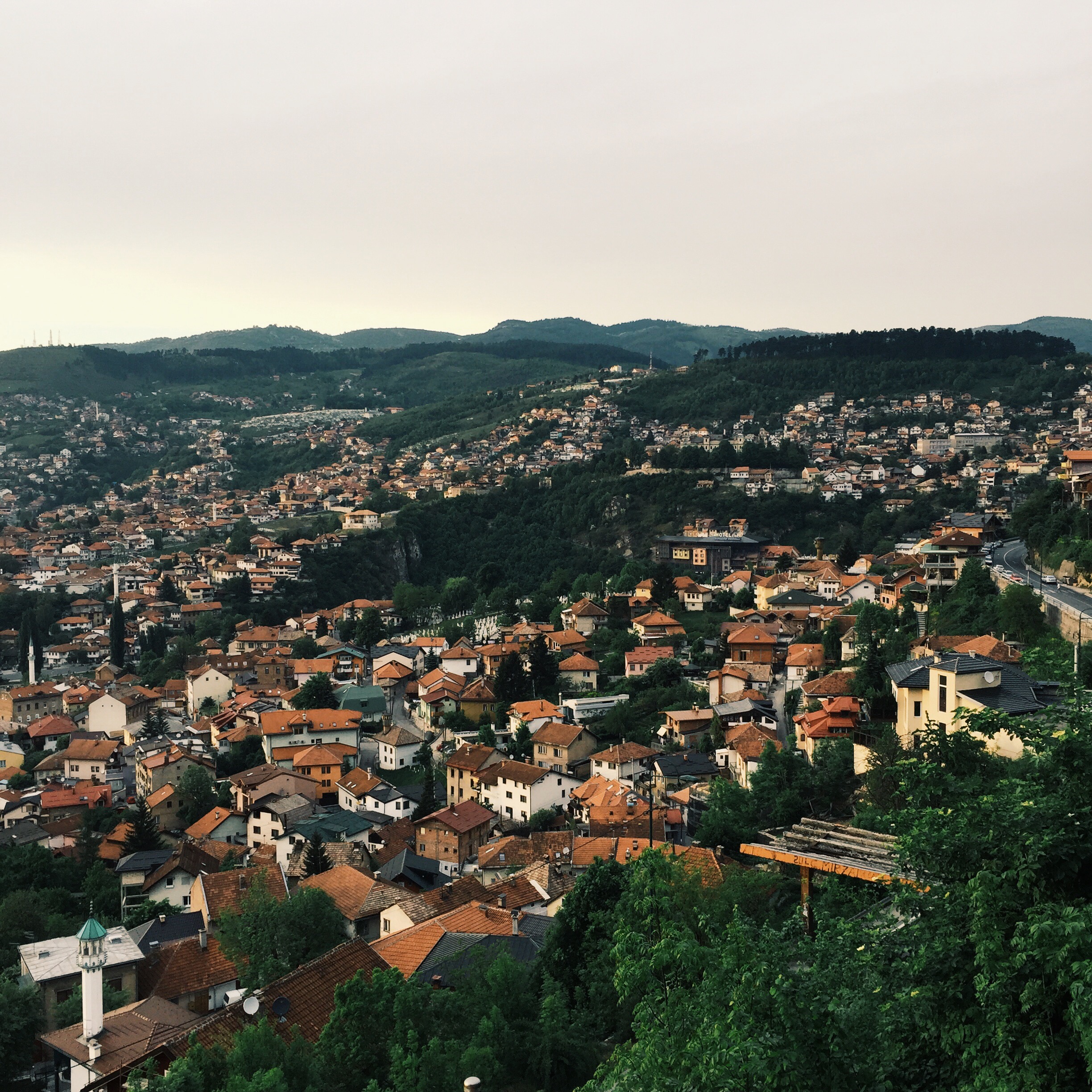
In Bosnia, history inevitably complicates the landscape. The hills of Sarajevo, though beautiful, hold memories of sniper fire and mortar shells: in order to capture lowland cities like Sarajevo, wartime militants took the highlands and attacked civilians from above. In this city, which survived a nearly 1,500-day siege — the longest siege of a capital city in modern history — the facades of the buildings hold history in a more literal way. While much of the city has repaired, moved on, and filled with new life, many walls, buildings, and walkways are still marred by bullets expelled from guns more than two decades ago.
I’ve done a lot of thinking about Bosnia. Five years ago, I found myself at a youth conference in Luxembourg and, by way of luck and curiosity, sat in on a student presentation in a small backroom of the conference hall. The students, who came from United World College in Mostar, Bosnia and Herzegovina, spoke about equality. Specifically, they presented on education in Bosnia, and the strange frozen tension that resulted from the Dayton Accords, the peace-agreement-turned-consitution.
As a sixteen-year-old who had traveled very little, but who wanted very badly to know the world, I was shocked at my ignorance. Bosnia and Herzegovina was, to me, a country with a long name, one I couldn’t locate on a map if I tried, and one where I knew, vaguely, something bloody had happened at some point.
A few days ago, our group met with Tim Clancy, an American who has lived in Bosnia since the war, and who, like me, found something in the country that resonated deeply within him. As he advised us each on local sources for our articles, he said something that made its way into many of our notebooks: “If you’re in Bosnia for a day, you write an article. If you’re in Bosnia for a week, you write a book. If you’re in Bosnia for longer than that, you have no idea what to write anymore.”
I fell into that rabbit hole long ago. My sixteen-year-old self left that youth conference feeling an undeniable pull to know more. What began as a half-hour presentation turned into a yearlong project, and eventually brought me to this moment. Now, in a dizzying twist, I find myself helping lead a gaggle of student reporters through the Balkans, each of them on his or her own journey to know more, understand more, and see more. I see many of them as seduced by Bosnia’s beauty as they are confounded by its recent history.
I’ve done a lot of thinking about Bosnia, but despite all of this, I’ve only just arrived. After studying Bosnia on my own for so long, watching so many hours of video footage, reading so many chapters of so many books, and culling through so many archives of wartime news coverage, it is the first time my own feet have touched the streets of Sarajevo, or my own fingers interlaced to catch water from a fountain in Baščaršija.
The beauty of a trip like this lies in the experiences, conversations, and sights — the least tangible aspects, really. But here, the tangible things matter, too. It is not inconsequential, for example, that some buildings are reconstructed while others hold deep scars from a war that the rest of the world seems to have forgotten.
These are the small remembrances. The bullet wounds of Sarajevo do not determine everyday life for Bosnians. Inside and outside of the city limits, life continues as it does elsewhere, though not without its own peculiar complications.
Further outside the hills of Sarajevo, in the mountains of Herzegovina, old men sit at small roadside stands selling honey. As many people in Bosnia like to tell foreigners, there’s an old saying that the term “Balkan” comes from two Turkic words meaning Blood and Honey. Whether or not this etymology is historically accurate, the beekeepers of Herzegovina — all of them old enough to be survivors of the war — have seen the land spill both. Out here, far from the pockmarked buildings of Sarajevo, the landscape remains pregnant with its complicated past.
Skyler Inman ’17 is in Jonathan Edwards College. She can be reached at skyler.inman@yale.edu.